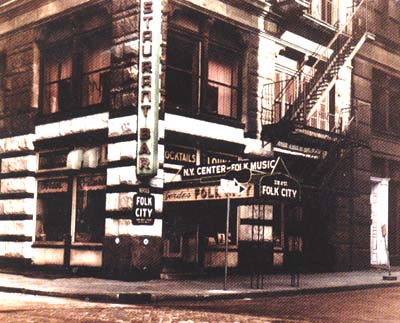Last week I threw out the Grand Plan challenge. I thought it only appropriate that I should reveal one of my very own Grand Plans. Here goes.

I propose a music row along either Temple Street or West Street in Downtown Crossing.
I love music in general and, among many other musicians, Bob Dylan in particular, so I always fall back on the example of Gerde’s Folk City. Dylan came from Minnesota to New York because he heard about the amazingness of one section of Greenwich Village that centered around Gerde’s. Joan Baez, The Clancy Brothers, Pete Seeger, Rev. Gary Davis and many others played there.
Besides New York, I’ve been to two other cities whose music blew me away.
First, tiny Galway Ireland, where musicians stake out their spots on Key Street and play, and the bars all through town have everything from trad Irish music to rock, pop and hip hop bands every day of the week. Everywhere you go there’s live music.
Second, Nashville, Tennessee, another city whose musical reputation outstrips its size. Broadway’s Honky Tonks are totally awesome. 6 or 8 venues with windows open, no cover, music from the early morning to the early morning. My favorite time in Nashville was 10 o’clock Sunday morning drinking coffee with a couple friends at The Stage watching a middle aged guy play amazing country music. I don’t know for sure but I like to imagine that he’s a studio musician and he’s played with everyone I’ve ever heard of.
Both Galway and Nashville provide music lovers with a central location to see original music. While the Boston area has a couple clusters where there are shows (Central Square in Cambridge and Allston come to mind), Downtown is devoid of great music, unless you count the cover bands in Faneuil Hall, which I don’t. We lose when our culture isn’t front and center and convenient to people.
So just imagine getting out of the T at Chinatown, Boylston or Downtown Crossing and then heading over to sample 6 different spots where the best of Berklee, New England Conservatory, Boston Conservatory and all the rest of the bands and musicians who play around Boston can perform in one place. Awesome right? Grand even?
Beyond simple fun, there’s an economic case for this sort of clustering.
The history of creative movements is chock full of amazing artists who knew every other known artist of their particular style. Matisse and Picasso…their works don’t resemble each other’s but they were best friends/rivals.
At the BRA and other economic development organizations, clustering gets a lot of attention. As the theory goes, when you cluster companies in similar industries together, you create more opportunity for collaboration, creativity and healthy competition. With collaboration, creativity and healthy competition comes greater success for all involved. The City’s Innovation District effort is based on this theory writ large. In the Innovation District, the City has extended the concept beyond tradition industry designations, hoping (with significant supporting research) that the clustering of all sorts of industries that require creativity and innovation (biotech, arts, software development, clean technology) will make each industry stronger and more creative and, in turn, make Boston more innovative into the 21st and 22nd centuries.
The same concepts should hold true for culture. If we do a better job of providing musicians and artists with performance space where they can be seen, and where they can interact with each other easily, we will raise Boston’s profile as a cultural city. It always bothers me when I listen to hip hop that no one EVER mentions Boston.
All we need to make this happen is lots of City support and some unknown sum of millions of dollars.
Who wants to make it happen?



